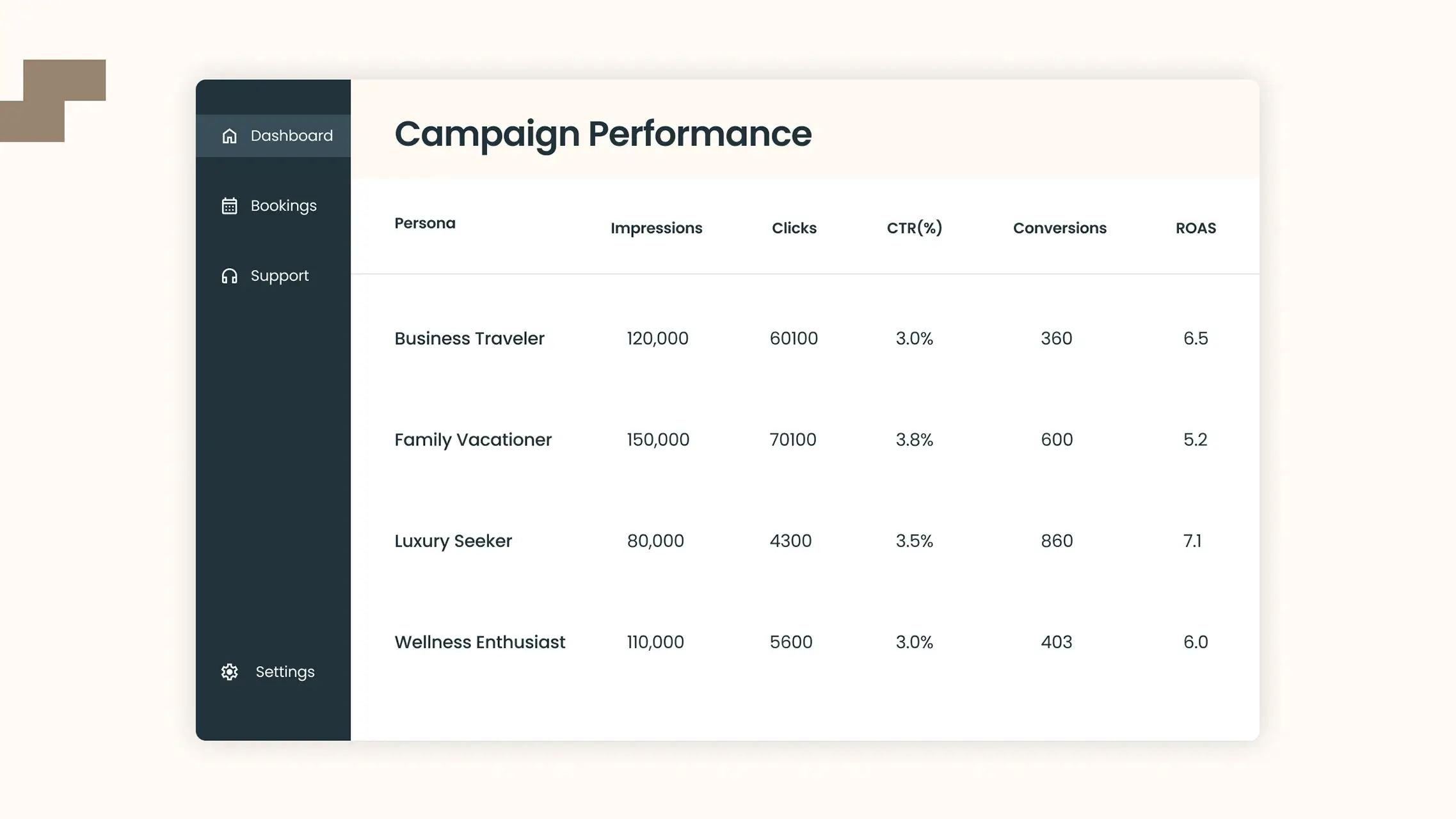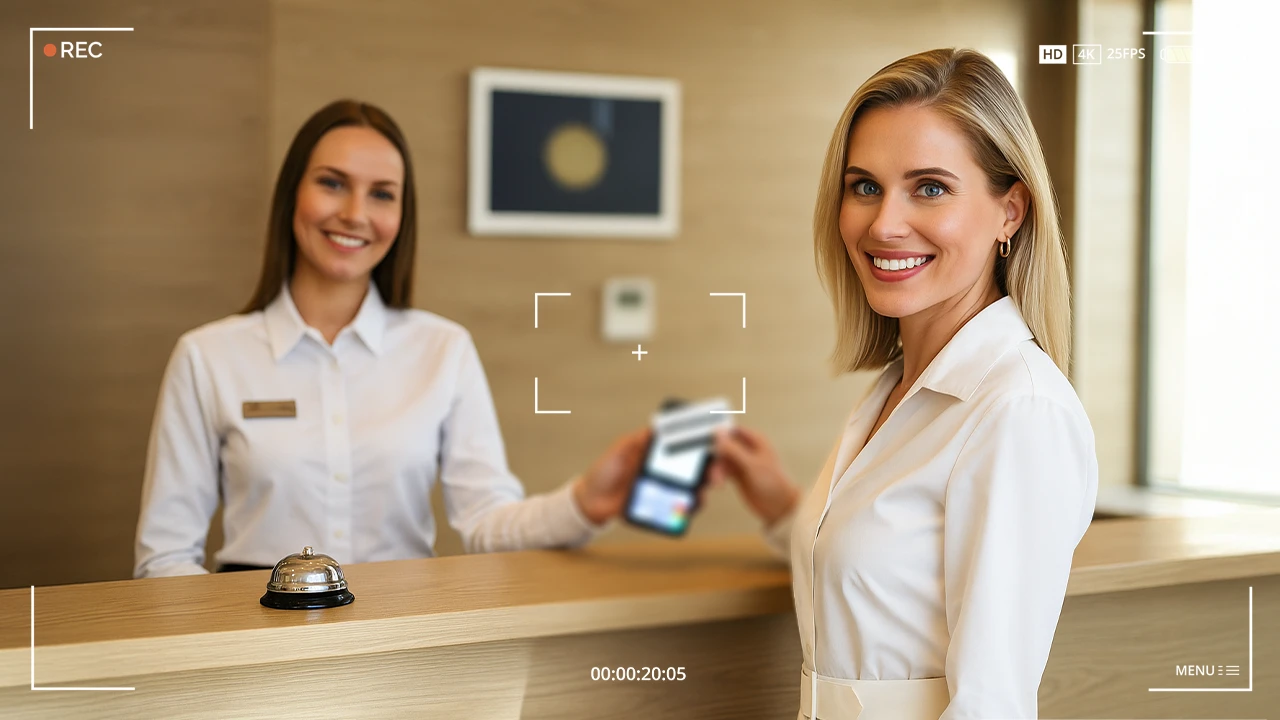In today’s hyper-competitive hospitality industry, where personalization drives performance, customer segmentation marketing is more than just a tactic; it’s a strategic imperative. From boutique hotels in the Cotswolds to bustling conference venues in London, every hospitality brand is competing not just for bookings, but for loyalty and lasting guest relationships.
This is where a data-driven customer segmentation strategy becomes invaluable. By understanding exactly who your customers are, how they behave, and what they value, hotels can build targeted campaigns that maximize relevance, reduce acquisition costs, and improve conversion rates.
Whether you’re working with a leading hospitality marketing agency or running your strategy in-house, segmenting your audience is essential for optimizing marketing outcomes and standing out in a crowded market.
What is Customer Segmentation Marketing?
Customer segmentation marketing is the process of dividing a broad audience into smaller, more defined groups based on shared characteristics. These segments can be based on:
- Demographics (age, gender, income)
- Behaviour (booking frequency, loyalty)
- Psychographics (values, interests, lifestyles)
- Geography (country, region, urban vs. rural)
- Booking patterns (last-minute vs. early bookers)
In the context of customer segmentation in hospitality, the goal is to create personalized marketing messages and experiences that resonate with each specific group.
Why Customer Segmentation Matters in Hospitality Marketing
The importance of customer segmentation in hospitality lies in its direct link to business performance. Generic marketing fails to speak to the diverse needs of modern travelers. Segmenting customers allows for precision targeting, enhancing guest satisfaction while improving key marketing KPIs like click-through rates, engagement, and conversion.
Key benefits include:
- Improved marketing efficiency – Targeted campaigns are more likely to convert, improving ROI.
- Stronger guest loyalty – Personalized experiences boost satisfaction and repeat business.
- Better resource allocation – Understanding high-value segments helps allocate the budget effectively.
- Competitive edge – In a saturated market, tailored messages stand out more than generic ones.
Types of Customer Segmentation in Hospitality
1. Demographic Segmentation
Demographic segmentation involves dividing the market based on variables such as age, gender, income, education level, occupation, or family status.
Example: A luxury resort may target high-income millennials for premium suites, while a budget city hotel may focus on young business travelers and backpackers.
Why it works: Understanding who your customers are demographically helps tailor offers (e.g., honeymoon packages, senior discounts) and platforms (e.g., TikTok vs. email) accordingly.
2. Behavioral Segmentation in Marketing
Behavioral segmentation in marketing focuses on how customers act, including:
- Frequency of bookings
- Type of rooms booked
- Travel companions (solo, family, business)
- Loyalty program status
- Booking channels (OTA vs. direct)
Example: Targeting repeat guests with loyalty incentives or offering last-minute deals to spontaneous bookers.
Why it matters: In B2C and B2B customer segmentation, behaviour reveals intent. Tailoring promotions based on habits significantly improves engagement and drives conversions.

3. Psychographic Segmentation
Psychographic segmentation dives deeper into customer mindsets—values, lifestyle, social status, and travel motivations.
Example: A wellness retreat might segment customers into health-conscious travelers and offer tailored wellness itineraries or detox packages.
How to leverage this: Use surveys, loyalty program data, and social media analysis to understand what your guests care about. Align messaging with these emotional drivers to create authentic connections.
4. Geographic Segmentation
Geographic segmentation involves targeting based on location, domestic vs. international guests, regional travel trends, or urban vs. rural preferences.
Example: Offering exclusive rates to local staycationers or targeting U.S. travelers during UK off-peak seasons with flight-inclusive packages.
This is especially useful in hospitality as travel intent is often seasonal and region-dependent.
Benefits of Customer Segmentation Strategy
A thoughtful customer segmentation strategy helps brands make data-backed decisions and unlock better performance across the funnel.
1. Personalized Experiences = Higher Loyalty
Guests are more likely to return when they feel seen and understood. Tailored recommendations (like spa services for wellness travelers or early check-in for business guests) increase perceived value.
2. Enhanced ROI and Resource Efficiency
Targeted campaigns cost less per conversion. By focusing only on high-intent segments, your brand avoids wasting budget on uninterested users.
Knowing how each segment responds also supports better media buying and budget allocation.
Example: If your analytics show that Gen Z travelers convert best via Instagram and Stories, you can scale down Google Ads and focus more on influencer partnerships.
ROI is a critical measure of success in any customer segmentation marketing initiative.
3. Improved Collaboration with Your Hospitality Marketing Agency
If you work with a hospitality marketing agency, having well-defined customer segments will help them create laser-focused campaigns, from PPC and content to social media and CRM.
They’ll also be able to craft guest personas, optimize targeting, and report more precisely on ROI and engagement.
4. Better B2B and Group Sales Targeting
Segmentation isn’t just for leisure travelers. B2B customer segmentation allows hotels and event venues to target specific corporate accounts, industries, or booking behaviors.
Example: Segmenting based on booking history (e.g., quarterly events, company retreats) helps sales teams send timely and relevant offers.
How to Implement a Customer Segmentation Strategy
Building a successful customer segmentation marketing strategy starts with structured data collection and ends with personalized guest experiences that boost revenue and loyalty. Here’s a detailed, step-by-step approach tailored specifically for the hospitality industry.
Step 1: Collect the Right Data
At the heart of any effective customer segmentation strategy is robust and relevant data. Hospitality brands should consolidate guest data from various touchpoints to gain a comprehensive view of customer behavior, preferences, and value.
Start by gathering data from:
- CRM Systems – Track guest history, booking frequency, average spend, preferred rooms, and loyalty status.
- PMS (Property Management System) – Gain operational data such as check-in/out patterns, stay duration, and service usage.
- Social Media & Google Analytics – Understand what content guests engage with, what drives traffic, and where your audience comes from geographically.
- Email Campaign Performance – Monitor open rates, click-through rates, and content preferences by segment.
- Direct Feedback & Surveys – Collect insights into guest motivations, pain points, and satisfaction levels directly from your audience.
Why it matters: These data points form the foundation for building a robust customer segmentation in the hospitality framework. Without data, your segmentation will be based on assumptions, not real behaviors or preferences.
Step 2: Choose Segmentation Variables
Not every hospitality business needs to use the same segmentation model. Choose variables that align with your specific goals, brand identity, and guest types.
Common segmentation dimensions include:
- Demographic Segmentation: Age, gender, income, family status
- Behavioral Segmentation in Marketing: Frequency of bookings, loyalty tier, last-minute vs. early planners
- Psychographic Segmentation: Guest values (luxury vs. affordability), motivations (relaxation vs. adventure)
- Geographic Segmentation: Domestic vs. international travelers, urban vs. rural regions

Example: A wellness resort may prioritize psychographic data to segment health-conscious travelers, while a business hotel near an airport may focus on booking patterns and stay frequency.
Pro Tip: Consult with a hospitality marketing agency to identify which segmentation dimensions best support your revenue goals.
Step 3: Build Guest Personas
With data in hand, the next step is to build detailed guest personas—fictional profiles that represent typical members of your customer segments. These personas make it easier to tailor marketing content, offers, and communication channels.
Sample Personas:
- Last-Minute Lucy
- Books 48–72 hours in advance
- Seeks flash sales and spontaneous getaways
- Responds well to SMS and Instagram Story ads
- High engagement, low loyalty
- Books 48–72 hours in advance
- Wellness William
- Travels for relaxation, yoga, and clean eating
- Books longer stays with spa add-ons
- Prefers email newsletters and inspirational content
- High lifetime value, high referral potential
- Travels for relaxation, yoga, and clean eating
Why personas matter: They humanize your data and help every department, from marketing to guest services, create consistent and personalized experiences.
Step 4: Personalize Campaigns and Offers
Once guest segments and personas are defined, it’s time to act. Personalization should occur across every touchpoint, website, ads, emails, and even on-property services.
Tactics to implement:
- Email Automation: Send tailored content to loyalty members, such as exclusive deals, early access, or birthday offers.
- Retargeting Ads: Display room or package ads to users who visited but didn’t convert. Customize by segment (e.g., retarget “Last-Minute Lucy” with 24-hour deals).
- Segment-Specific Landing Pages: Use dynamic content to adjust your website based on user behavior or referral source. Highlight family packages for parents or co-working space features for business travelers.
SEO Tip: Use long-tail keywords like “luxury hotel deals for couples” or “business hotel near Heathrow with meeting rooms” for each persona’s search behavior.
Measuring Success of Your Segmentation Strategy
Once your customer segmentation marketing strategy is live, measuring its impact is essential. The right KPIs will help you understand how each segment responds and where to refine your approach.
Key Metrics to Track:
- Conversion Rate by Persona
Measure how many visitors in each segment complete bookings, inquiries, or other goals.
- Email Open & Click-Through Rates by Segment
Segmented email campaigns should see significantly higher engagement rates than generic ones.
- Revenue per Campaign per Segment
Track revenue generated by each marketing campaign per audience. Use this to adjust budget allocation.
- Customer Lifetime Value (CLV) by Segment
Some guests may cost more to acquire but bring greater long-term value. Focus on retaining these segments.
- ROAS (Return on Ad Spend) by Behavior or Demographics
Analyze which guest behaviors yield the best ROI. For example, retargeting frequent visitors may bring a higher ROAS, an essential metric in evaluating ROI in digital marketing.
Use tools like:
Google Analytics (with user segmentation) Email platforms like Mailchimp or HubSpot CRM systems with reporting features (e.g., Salesforce, Revinate) Data visualization platforms like Looker or Power BI Insight: Always compare segmented campaigns with broad ones. If segmented campaigns consistently outperform generic ones, your customer segmentation strategy is on the right track.

Conclusion: The Future of Personalization in Hospitality
In an age where travelers expect brands to “know them,” delivering personalized experiences isn’t optional; it’s a competitive requirement. A well-executed customer segmentation marketing approach allows hospitality brands to move from one-size-fits-all communication to targeted, relevant engagement at every stage of the guest journey.
Key Takeaways:
- Customer segmentation in hospitality enables tailored messaging, improved guest satisfaction, and stronger loyalty.
- Using data to build meaningful personas enhances both acquisition and retention.
- A segmentation strategy, when backed by robust analytics, drives a measurable increase in marketing ROI.
- Working with a data-savvy hospitality marketing agency ensures your segmentation evolves as guest preferences and booking trends change.
Whether you’re a boutique hotel crafting experiential packages or a corporate chain optimizing loyalty campaigns, segmentation is your secret weapon. By investing in smarter targeting now, you’re setting the foundation for scalable, sustainable growth.
If you’re looking to improve your marketing precision, increase ROI, and deliver unforgettable guest experiences, it’s time to invest in customer segmentation marketing. Whether you need help defining your customer segments, building behavior-based personas, or launching personalized campaigns, our team is here to support you every step of the way.
Let’s turn your guest insights into profitable action.










